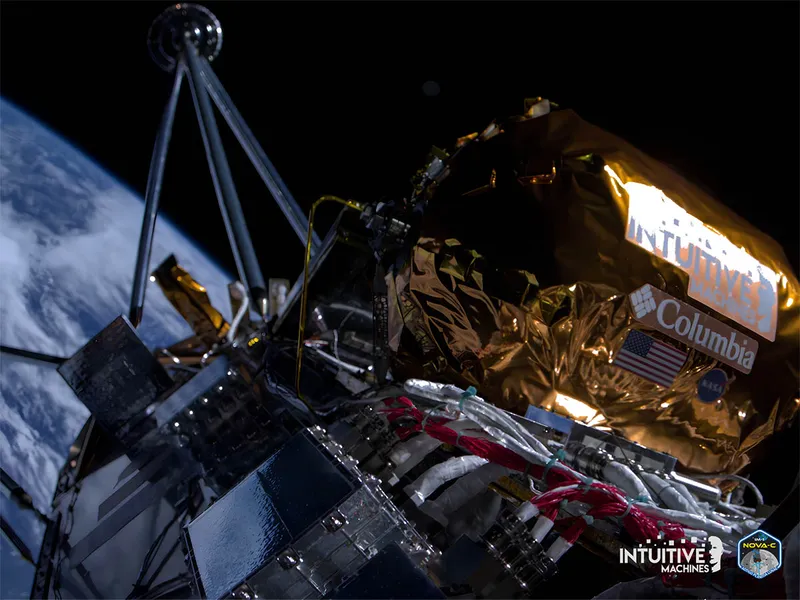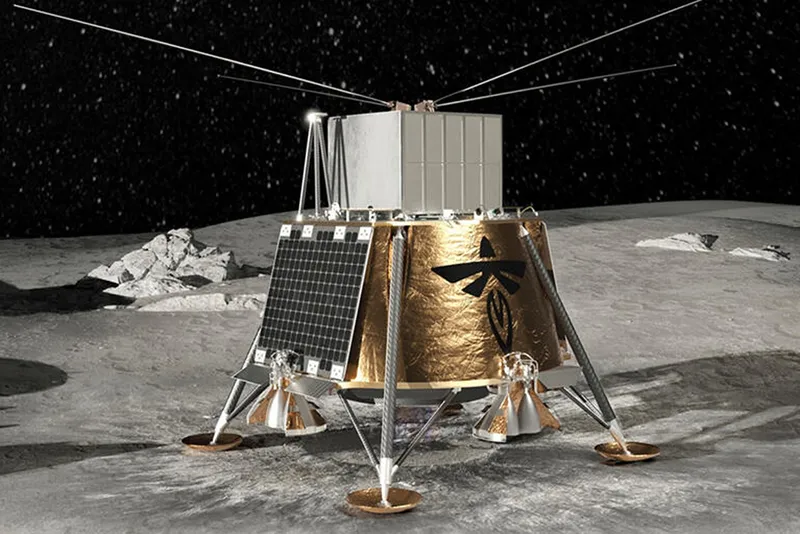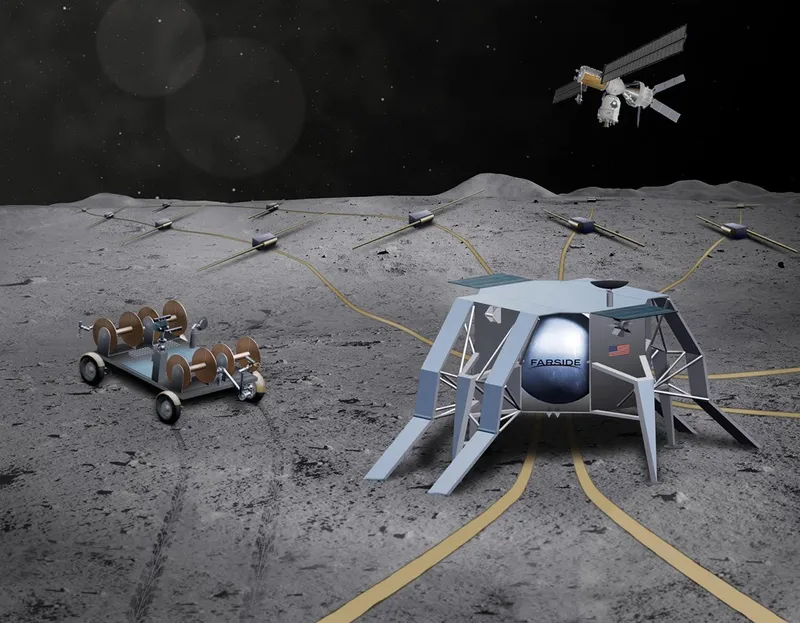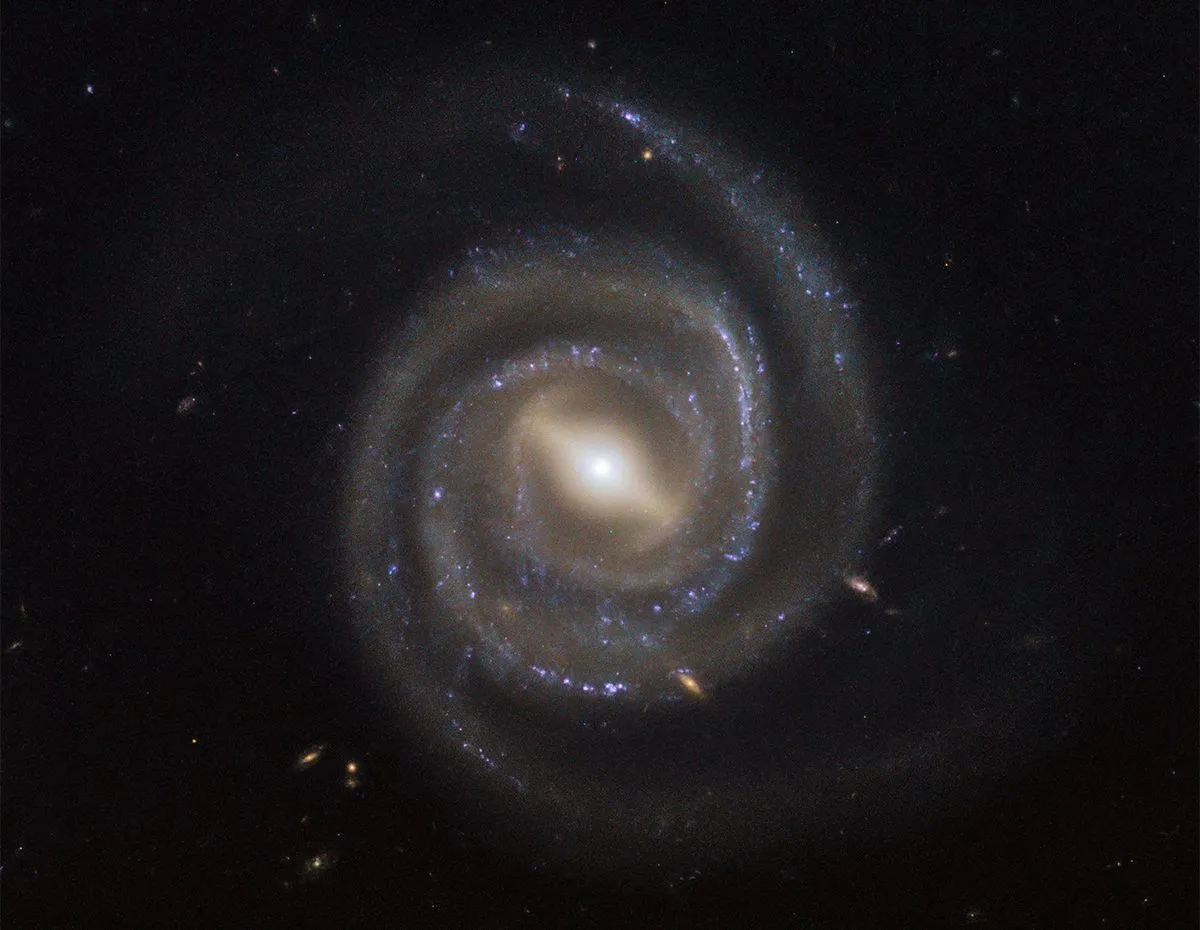NASA is about to put a radio telescope on the Moon. It’s not a big dish, but a set of four simple wire antennas weighing just 4 kilograms.
ROLSES, as the device is called, is one of the instruments on board Odysseus, the uncrewed commercial lunar lander built by Intuitive Machines.
Odysseus launched on 15 February 2024 and should land on the Moon with its radio telescope intact around 22 February, in the Malapert A crater near the lunar south pole.
Find out how to watch the Odysseus mission land on the Moon

Why put a telescope on the Moon?
If you want to do radio astronomy like never before, the Moon is a prime target.
"The Moon is where we want to go," says principal investigator Jack Burns (University of Colorado, Boulder).
"The lunar far side is the only radio-quiet zone in the Solar System."
Disturbing radio interference from Earth is shielded by 2,000 miles of rock, says Burns, enabling the detection of extremely faint low-frequency radio waves from the early Universe.
As a demonstrator instrument, ROLSES (Radio-wave Observatory at the Lunar Surface of the Electron Sheath) will operate from the near side of the moon.
This telescope on the Moon's main goal is to find out how cosmic radio waves are scattered by the porous lunar regolith or ‘moon dust’.
In addition, ROLSES will study low-frequency radio emission from aurorae in Earth’s atmosphere.
LuSEE-Night telescope on the far side of the Moon

According to Burns, ROLSES is a pathfinder experiment for the future LuSEE-Night instrument (Lunar Surface Electromagnetic Experiment), which will be deployed at the Moon’s far side, hopefully in 2025 or 2026.
A partnership of NASA and the Department of Energy, LuSEE-Night could possibly hitch a ride on ESA’s Lunar Pathfinder mission.
This would put a telescope on the far side of the Moon, giving astronomers an unprecedented look at the Universe.
Astronomers like Burns are even dreaming of big radio sensor arrays on the far side of the Moon, more or less comparable to the European Low-Frequency Array (LOFAR) and the Australian Murchison Wide-field Array (MWA).
A concept known as FARSIDE (Far-side Array for Radio Science Investigations of the Dark ages and Exoplanets) would consist of 100 dipole antennas on kilometre-long tethers, rolled out by a small rover-like robot.

How big can a telescope or observatory on the Moon really be?
Ultimately, Burns hopes to realise a large, in-situ manufactured array of 100,000 dipoles, distributed over an area of 3 square kilometres, in the 84-kilometre-wide impact crater Pauli on the moon’s far side – a futuristic plan known as FarView.
Its main goal: to study the birth of the very first stars and active galactic nuclei in the new-born Universe.

Meanwhile, radio astronomer Marc Klein Wolt (Radboud University, the Netherlands) is working on a very different scheme of deploying radio sensors on the Moon.
Instead of using small rovers, the idea is to print the dipole electronics on the surface of a huge ‘air mattress’ that will be inflated once on the Moon.
"We hope to launch a small prototype on a future commercial lunar lander," says Klein Wolt.
All in all, the future for radio astronomy on the Moon’s far side looks bright.
However, both Burns and Klein Wolt are worried about radio interference from future networks of communication and navigation satellites orbiting the Moon.
"Of course, we need communication satellites to transmit our data to the Earth," says Klein Wolt, "but it’s important to shield their electronics and to make sure they don’t operate at the frequencies we’re observing."
